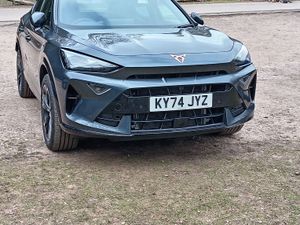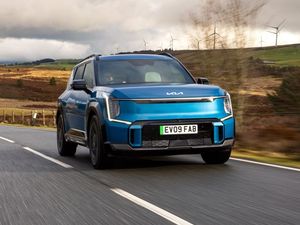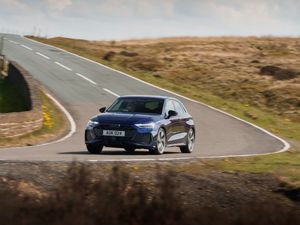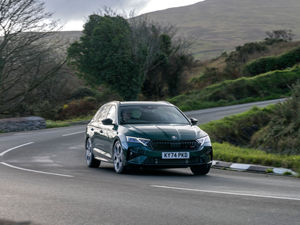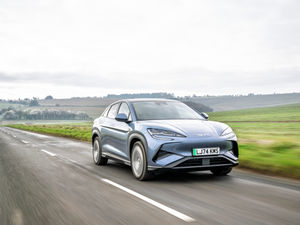First Drive: Can the Mercedes B-Class show that there’s new life in the MPV?
The B-Class is a practicality-focused model which shares much of its layout with the A-Class hatchback. What’s it like? Jack Evans finds out.

What is it?

>
A few years ago, it felt like the days of the humble MPV had passed. With crossovers and SUVs being very much the flavour of the month, practicality-focused minivans and microbuses seemed to have been pushed into the shadows, relegated to a distant period of motoring history.
But that all seems to have changed. We’ve seen a few more MPVs arrive on the scene while Mercedes has chosen to refresh its practical B-Class for 2023, rather than ditching it in favour of a crossover. Does it make for a useful, spacious choice? We’ve been finding out.
What’s new?

>
The refreshed B-Class has coincided with the release of the equally revitalised A-Class. But it’s the B that puts a greater focus on roominess and practicality, with its boxy, upright frame providing a better amount of headroom than its sleeker, hatchback cousin. We’ve also got a slightly edgier design than before, with redesigned headlights and a sharper front grille helping to give the B-Class a little more impact than it did previously.
Mercedes has also bumped up the level of standard equipment on the B-Class to make it a better proposition value-wise, with features such as a reversing camera and extra USB-C power points included from the off.
What’s under the bonnet?

>
Mercedes offers the B-Class with a petrol mild-hybrid, but we’re testing out the rarest of beasts these days – a diesel. It’s a 2.0-litre turbocharged unit developing a modest 150bhp and 320Nm of torque, equating to a respectable 0-60mph time of 8.3 seconds and a top speed of 136mph. It’s all linked to an eight-speed automatic gearbox, too.
Efficiency-wise, we’re talking a claimed fuel consumption of 55.4mpg and CO2 emissions of 135g/km, which both represent average figures for this size and type of vehicle. Of course, petrols will be a better option for lower-distance drivers but for those doing longer journeys, then this diesel will naturally prove to be a more appropriate choice.
What’s it like to drive?

>
The traditional MPV has never focused heavily on outright driving dynamics nor complete involvement for the person behind the wheel. They’re meant to be comfortable and easy to live with and, in that respect, the B-Class is right on the money. The suspension does well to stop the vast majority of bumps and potholes from disrupting the cabin, while the seating position gives a surprisingly elevated view of the road ahead.
This 2.0-litre engine really does show diesel in its best light, too; it’s responsive and has a lot more shove than you might think. It can feel a little agricultural at slower speeds and when cold – as do pretty much all diesels – but cruising on the motorway it feels truly at home. The automatic gearbox shifts nicely, too, though it can be a bit tricky to make a clean getaway from a dead stop as the power delivery can sometimes make the B-Class lurch from the lights. You need to be a little gentler with the throttle to dial this out.
How does it look?

>
The MPV segment has never been one for outright style, but the look of the B-Class certainly isn’t unattractive. As we’ve touched upon, Mercedes has applied some tweaks here and there to the look of this model and it has all combined to make a car that really looks quite premium from the outside.
For a sportier look, there are AMG specifications to choose from which bring new designs to the grille and other areas. The B-Class is also available with alloy wheels of up to 19 inches, which seem huge for this type of car but actually look the part.
What’s it like inside?

>
Mercedes says that it has designed the interior of the B-Class to be ‘versatile’ and, once you’re inside, you can see what it is trying to achieve. You’ve got plenty of storage options dotted throughout the cabin and the door bins are usefully large. There’s a neat storage area – with well-sized cupholders – while the area under the armrest is of a good shape too and houses extra USB-C charging points. It’s a shame that swathes of gloss black plastic have been used as it does tend to attract a lot of dust and fingerprints.
Space-wise, the B-Class does really well. There’s loads of headroom and legroom for those in the back, too. At 445 litres there’s a good amount of boot space to play with, but be aware that petrol versions – with their mild-hybrid technology – do feature a slightly smaller 420-litre boot due to the fitment of the batteries.
What’s the spec like?

>
Mercedes has included more equipment than before on the B-Class, which is priced from £35,125 for an entry-level petrol version. Still, even on these versions you’re getting keyless entry, a 10-inch digital dashboard setup and wireless charging for your smartphone.
AMG Line versions throw in sports seats and a sports braking system, as well as a multifunction sports steering wheel trimmed in nappa leather. As we’ve found in the latest A-Class, Mercedes has removed the old trackpad which was used to control the screen, instead switching to a touch-operated setup. It makes sense and still remains easy to use, but because the screen is positioned quite far away you do need to lean a little further away than you’d like in order to operate it properly.
Verdict
The B-Class offers the versatility that you’d want from an MPV, but with the added classiness that comes from a Mercedes. It can’t rival the old-school gang of true people-movers – we’re thinking cars like the Renault Espace or Volkswagen Sharan – but if you like the look and feel of an A-Class but need more space, then the B-Class makes for a fine option.
It’s interesting to see a diesel engine incorporated into the range, too, given the penchant for petrol and plug-in hybrid in the current market, but this oil burner actually makes a great deal of sense – particularly for higher-mileage drivers.

